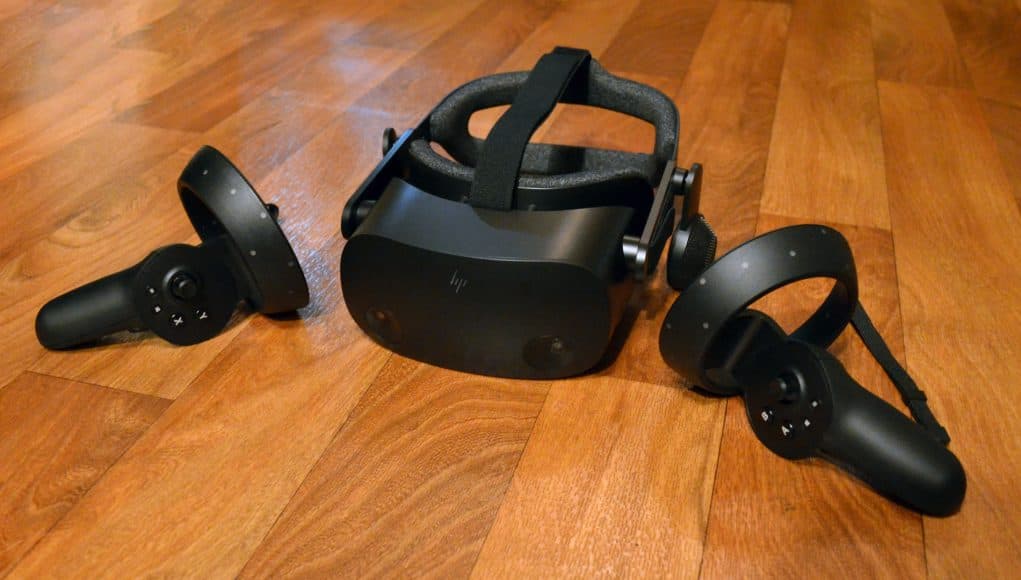
- news
- Full review HP G2 Reverb
Full review HP G2 Reverb
Full review HP G2 Reverb 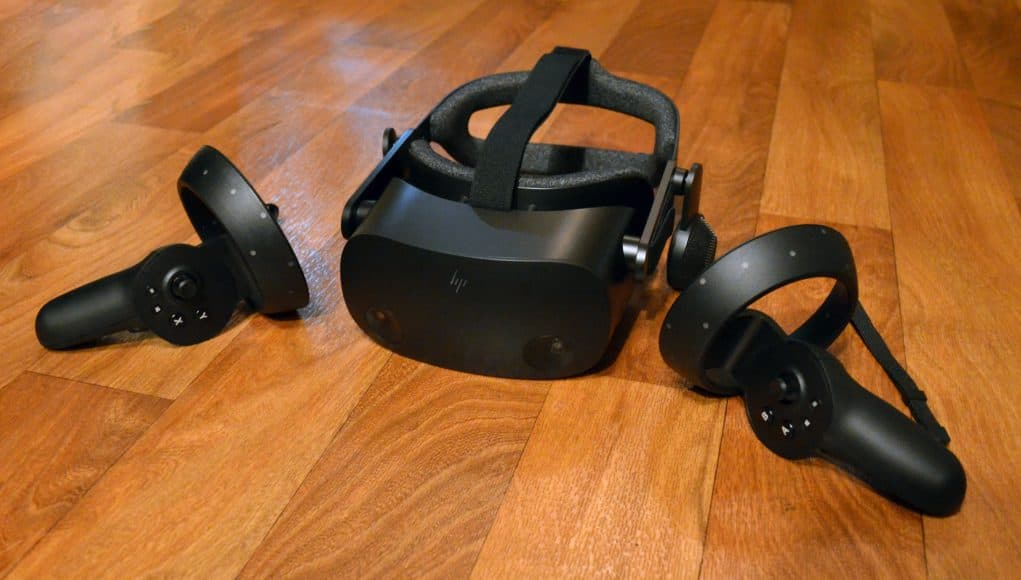
Finally got the latest HP headset for virtual reality Reverb G2, promising to bring some of the features Valve Index in the virtual reality environment Windows, along with best-in-class resolution, new controllers and improved tracking.
Here is a brief overview of the characteristics of the Reverb G2:
| Resolution | 2160 × 2160 (4.7 MP) on the eyes (LCD) |
| Update frequency | 90 Hz |
| Lenses | Fresnel |
| The field of view | 114 ° diagonal |
| Optical settings | IPD |
| IPD range | 60-68 mm |
| Connectors | USB-C, DisplayPort, power |
| Cable length | 6m |
| Tracking | 4 cameras onboard (no external beacons) |
| Controllers | Controllers Reverb G2 |
| Audio | External headphones |
| Microphone | Yes |
| Through the camera | Yes |
Review HP G2 Reverb
HP G2 Reverb really delivers razor-sharp images through the display 2160 × 2160 for each eye. Screen-door effect is practically absent on the headset that provides maximum image clarity compared to any headset in its class. Although the display is not “retina resolution”, it still offers great resolution and allows you to see details that are invisible with other headsets. Although the display and the lens is not perfect and does not offer such a wide field of view, as Valve Index, the headset manages to provide exceptional level of accuracy.
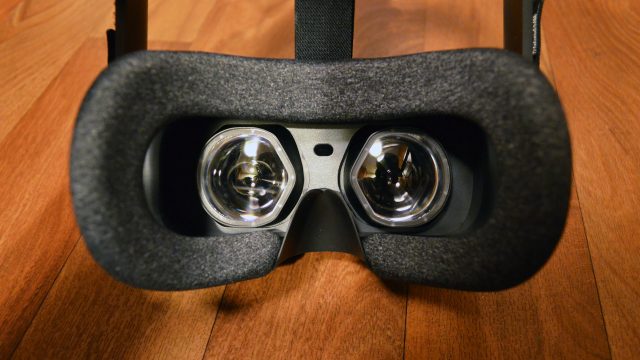
Because HP has worked with Valve over the headset, she had to use the same in-ear headphones from the Index. Great to have a powerful inbuilt sound in a form factor that doesn’t apply to you ears and not stopping you when you put on the headset. Although HP says that the drivers in headphones are identical to the drivers Index, you will notice some distortion at high frequencies, which sound not very good. Hopefully, HP can clarify this with some EQ settings after running.

The new controllers Reverb G2 — a welcome change to the old controllers for the WMR. They basically mimic the Oculus Touch in design, with the same overall shape and handle the same set of buttons, sticks and triggers. Although they do not seem such a premium, they work more smoothly with modern VR content.
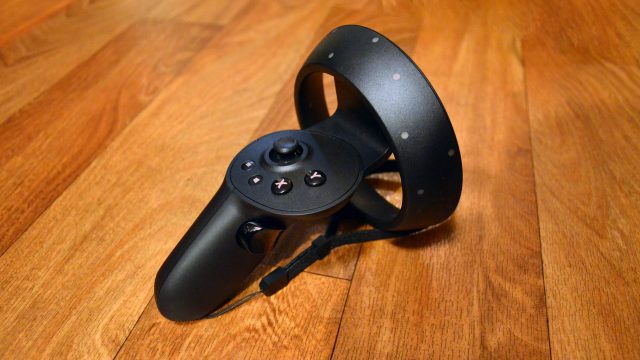
As for tracking, the G2 is the first headset WMR, which uses two or four cameras to monitor the inside-out. Thanks to two additional cameras on the side of the headset, this gives the controller much more coverage and helps to reduce the moments of “freezing” controller that happens when they spend too much time without direct line of sight from the camera. Despite the fact that the coating is increased, there are still some dead zones in the track above and below the headsets, which sometimes can be annoying, but never did not significantly affect the gameplay.
Head tracking remains as reliable as other headsets WMR, and does not cause any problems, aside from occasional stuttering caused by software when switching between apps or loading screens. The overall accuracy and latency for tracking of the controller is acceptable, but not exceptional, showing a large delay and jitter, than we see when tracking or SteamVR Oculus.
Quite comfortable and G2 better than G1, but in General not much moves the bar for comfort VR. Back strap retains the head and the upper strap helps to reduce pressure. Side straps to tighten the headset flexible, in practice a little weird because the straps and the struts do not slip so easily as they should. However, due to this elasticity flexible enough to easily put on and remove the headset without changing every time the density of the puff. In addition to the straps, the physical adjustment of the IPD in the range 60-68 mm allows to combine the lenses with the eyes for definition and comfort.
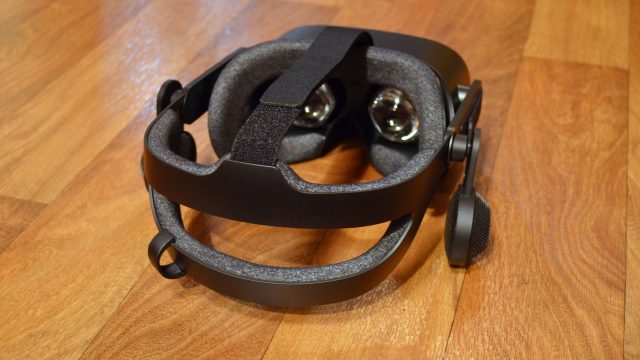
Although many users will likely not pay attention to the Windows environment, Mixed Reality and immediately go into SteamVR, Wednesday WMR is actually quite rich in features, allowing users to set up a permanent space and to migrate their desktop applications to VR in virtual floating Windows. Environment WMR also can be fully controlled using the VR controller or keyboard and mouse, making it a flexible way to do more than just play games VR.
While best-in-class resolution Reverb G2, it would seem, makes it a good candidate as a “virtual desktop” for the ultimate performance desktop VR, virtual monitor realistic size has only a resolution of about 720p (because it doesn’t stretch across the field of view of the headset). Although this solution is clearly really work this way still seems a novelty due to the reduction of your natural field of vision and even more limited “sweet spot” of the headset; both factors mean that when you use a virtual monitor, you will need much more to move your head than equivalent to the actual monitor, which in practice seems to be a compromise, especially considering the ergonomic of the victims associated with wearing headsets for a long time.
Headset for $ 600 Reverb G2 has a high value due to the excellent visual effects and acceptable tracking. It seems that it is particularly well suited to usage scenarios, focused on simulations where the resolution is a significant contribution to the experience.
A detailed review of the HP G2 Reverb
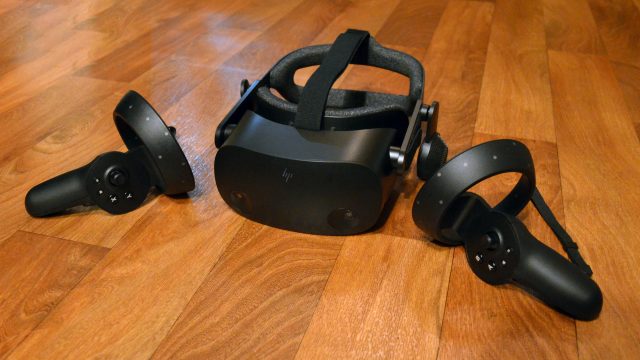
Display and lenses
Let’s get to the most attractive features Reverb G2 — his display. Thanks to the LCD display 2160 × 2160 for each eye, the headset provides best-in-class resolution, which “makes” most of the other headsets. Although the following table is an imperfect comparison, because it does not take into account the field of view, it gives a good idea of where the resolution Reverb G2 compared with the same headsets (and Rift CV1 of the first generation for reference):
| Headset | Megapixels on the eyes |
| Rift CV1 | 1.3 |
| Vive Pro | 2.3 |
| Rift’s | 1,8 |
| Quest | 2.3 |
| Index | 2.3 |
| Quest 2 | 3.5 |
| Reverb G2 | 4,7 |
“The screen door” no more
Reverb G2 — the first headset in its class, in which the effect of screen doors — Screen Door Effect (dark gaps between pixels) have almost disappeared. No matter how you try, black grid between the pixels, which is visible on most other headsets, just not distinguishable. This is a critical threshold that must be overcome, because today, almost every headset in this class has some level of Screen Door Effect.
The lack of Screen Door Effect and impressive sharpness doing everything in the headset is more solid and realistic. Additional sharpness also makes the sensation of stereoscopic depth is more clear that it seems more convincing to the brain.
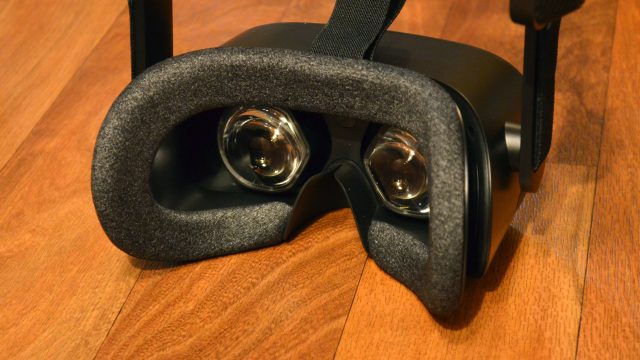
The resolution is so impressive that you can find that staring. Half-Life: Alyx you obviously you look for too long at a level of detail.
If you have ever had the experience of purchasing a new pair of headphones and the ability to hear previously unheard details in songs that you’ve listened to hundreds of times before — sometimes Reverb G2 feels the same, but the eyes, not the ears.
Of course, the absence of screen doors does not mean that the headset has a “retina resolution”, and this does not mean that it provides ideal clarity. Because it’s not retina resolution, the aliasing is still visible, but actually it is visible only in niche conditions, for example, when viewing a tiny high contrast details.
Mura and chromatic aberration
The overall clarity of the headset is a bit constrained by a small number of Mura (inconsistency pixels color and brightness of the display). The headset mura appears weak horizontal stretch, but it is quite weak, so it really wasn’t noticeable except against the background of certain colors.
Previous HP headset, Reverb G1 represents a good example for comparison to show how much better the G2, although both headsets have the same resolution.
From G1 was quite noticeable mura, as well as the red blur and chromatic aberration, which degrades its legibility, despite the high resolution. G2, on the other hand, has the lowest figure mura, no red blur (or ghosting of any kind) and lack of chromatic aberration that provides the best clarity among all the headsets in its class.
And although the Quest 2 is not far behind in resolution with displays with a resolution of 1832 × 1920 (3.5 MP) for each eye, the power of the PC have G2 means that the graphic accuracy of what you are likely to see through the headset, much better use all those pixels. And Yes, the Quest 2 can also be connected to a PC, but it gives an extra hit in quality due to coding compared to pixels that are displayed on the headset.
“Rays of God” and the field of view
As for lenses, Reverb G2 uses “I Freely”, like almost all other headsets. And if you know anything about VR — you know what that means: the rays of God. Yes, Reverb G2 shows them emanating from high-contrast elements, just like any other headset with a Fresnel lens. It doesn’t seem any better or worse than other headsets of this generation, such as the Quest 2 or Rift S.
Fortunately, Reverb G2 shows no outside glare, which is clearly visible in the headset, Valve Index when looking at high-contrast elements, though, it seems to be happening at the expense of field of view, which is not as great as the Index. Although HP advertises the angle G2 114 °, more like that it is on the same level as Quest 2 (which is informally considered to be about 90 ° or 95 °).
Lens shape
The lens G2 is one feature where they are less comfortable to the eye than similar headsets. Symmetric lens shape (which looks like a teardrop turned on its side) is not extended out over the nose to provide a more stereo field of view in the area between the eyes. While it usually occurs below the eye (because your nose is blocking that part of your vision), the effect produced by the lenses, creates ‘noobtube” blind spot above between your eyes.
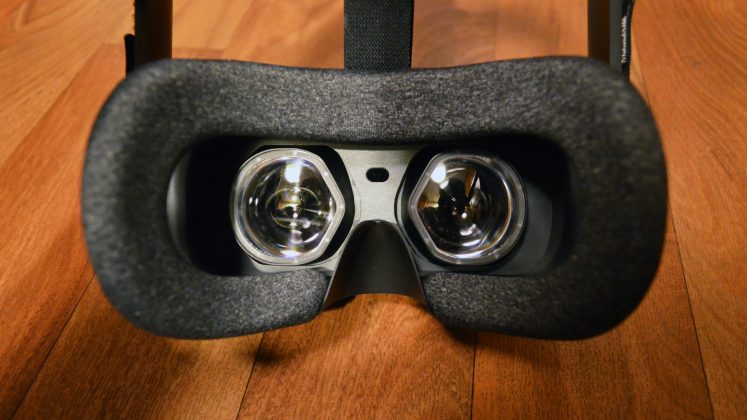 Lenses Reverb G2 reflect the nose cutout on the top half
Lenses Reverb G2 reflect the nose cutout on the top half
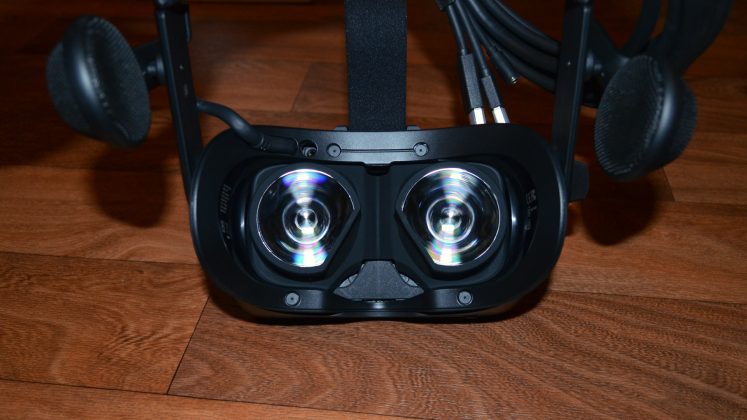 Lenses Index Valve closed most of the area above the nose
Lenses Index Valve closed most of the area above the nose
In General
In short, this headset with the clearest picture and the most resolution in its class.
Audio
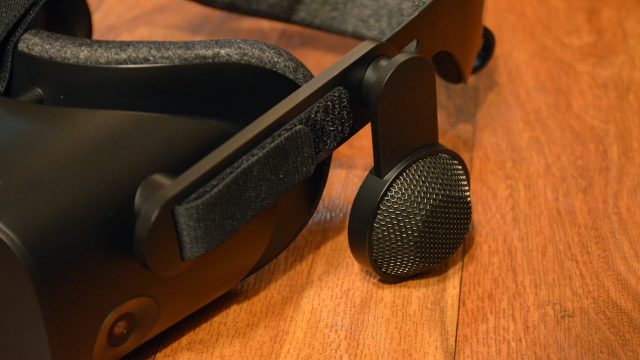
Reverb G2 borrowed the approach Valve Index to the sound of “outside the ear” — and not only the concept, but those same drivers. In-ear headphones great because they do not put pressure on the ears during a game and not get in the way when you put on the headset.
Although it seems that G2 speakers have the same power and a wide range of the dynamics of the Index, some high frequencies will be distorted. HP said it expects that headphones G2 will have the same performance as headphones Index, and therefore distortion can be eliminated using EQ settings after running away from HP.
Controllers
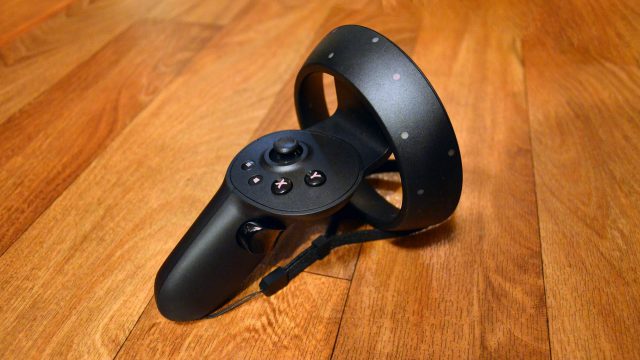
Reverb G2 is the first headset from the line of WMR, with new controllers. Although this is not the best VR controllers, this is a welcome improvement that is long overdue.
Although they use the same ring track as the originals, otherwise they basically mimic controllers Oculus Touch with the thumb, two large front buttons, two small buttons, MENU, index trigger and the trigger grip.
Compared with the original controllers WMR they are not only more ergonomic, but easier in the modern virtual reality applications, which are often created on the basis of the joysticks and the approach of “continuous maintenance” for grasping objects, both of which work better on the new controllers.
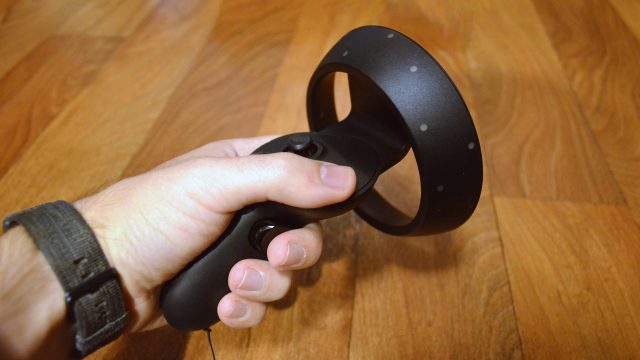
And as a note, controllers G2 have capacitive readout, as in the Index controllers or Touch.
Tracking
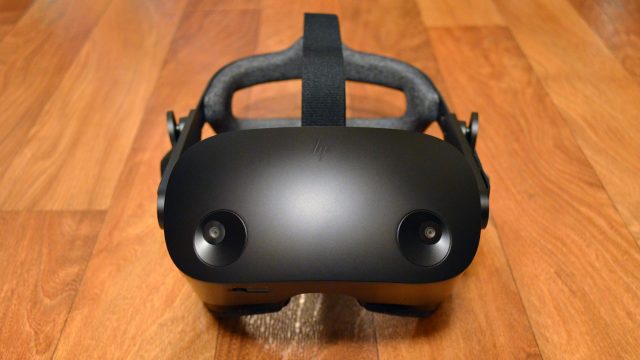
The coating controller
Like its new controllers, Reverb G2 also offers an updated tracking WMR for the first time since the release of the group set. Although HP claims that they use the same camera sensors as all other headset WMR, now they have added an additional camera on each side of the headset to provide additional tracking.
Additional cameras definitely broaden the area of coverage monitor and reduce cases of loss of the tracking controller when you raise arms out to the side or when you turn your head to the side, hands extended in front of him. Unfortunately, there are still a few dead zones from time to time you notice.
In particular, holding arms at sides and using the controller to restore a virtual laser pointer on the menu (as it is today in many interactions with the virtual reality), it is possible to detect that the controller sometimes loses the tracking. Usually you may not notice this loss of tracking because the controller is outside your field of view, but if you keep anything that is outside of your field of view (e.g., gun, spear or a laser pointer), it becomes obvious.
Of course, since most of the online interactions in virtual reality don’t expect you to keep your hands on the sides, it was an accident rather than an obvious error.
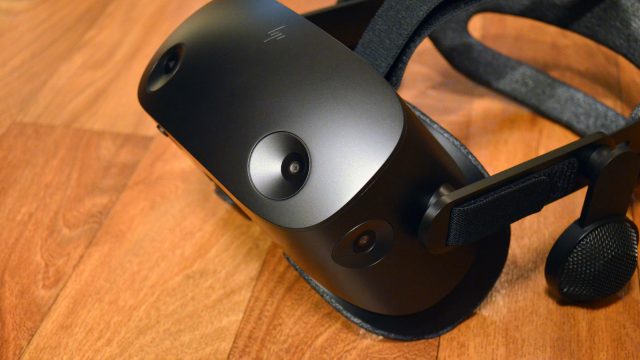
The same dead zone exists over the headset, but since it is rarely possible to perform any interaction when you raise hands above head, not looking at them, top dead zone is almost negligible.
The accuracy and latency
From the point of view of accuracy and latency, the tracking Reverb G2 looks the same as normally expected from WMR that, in a nutshell, is acceptable, but not very well.
As for accuracy, the G2 controllers cope with their task, but if you look at them closely, you will see that they twitch and tremble a bit more than what we can see from the tracking Oculus Insight or tracking SteamVR from Valve. If you need high precision — for example, for the virtual drawing, or modeling, you may prevent that shake.
Fit and ergonomics
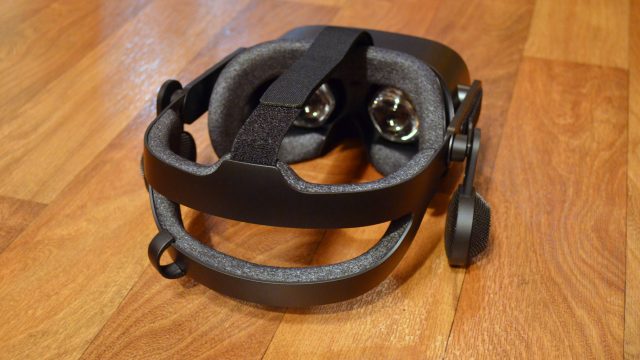
Although G2 has roughly the same shape of the rear of the belt, as Index, to tighten he used the Velcro straps on the sides, not the rear dial. The fit and finish of the Velcro leaves something to be desired; Velcro elastic, but often when you pull them to tighten the headset, they just stretch in place, not moving through as they should. Usually eventually it works (when you move the headset tension Velcro inevitably helps the strap to a tighter position), but in practice it is difficult to get the right density in place.
At least, elasticated straps mean that the head strap G2 may slightly bend when you put on the headset that allows you to easily put it on your head, without adjusting every time the belt tension. Of course, such a headset like the Rift and Index, offer the same thing, but they still manage to provide free movement of the struts and belts, when the user adjusts them.
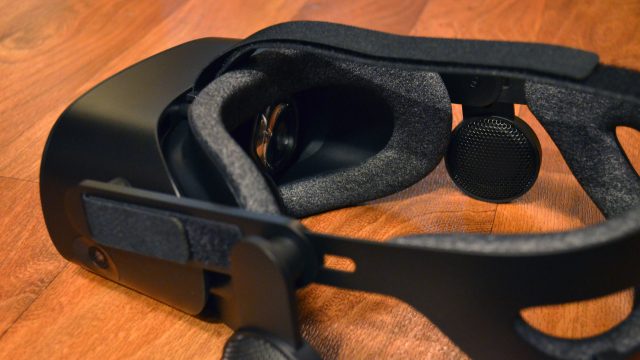
While the original G1 feel irritatingly tight around the nose, G2 has a larger nasal cavity, managing to prevent any leakage of external light due to some soft valves in this area.
G2 also has a hardware configuration of IPD in the range 60-68 mm, allowing users to align the lenses in the eyes for optimal clarity and comfort. Unfortunately, it is difficult to establish due to the large time delay between moving the slider and when the software displays the measurement of the IPD. This leads to a large number of trial and error when you have to gently push the drive and wait a few seconds to see whether the user is close to the ideal setting.
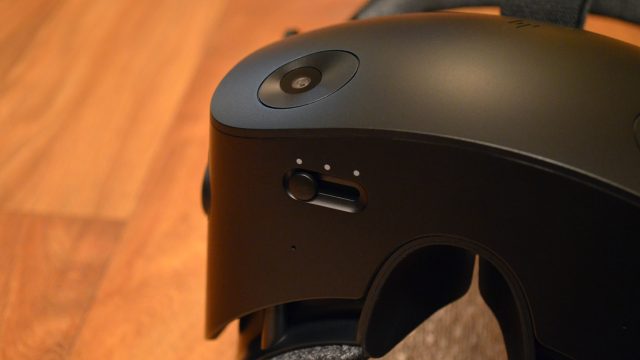
Software capabilities Windows Mixed Reality
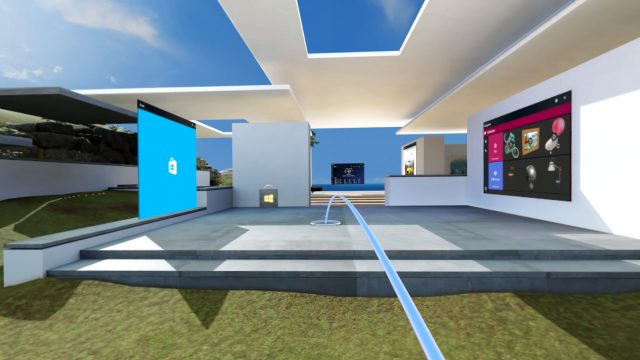
Since this is a VR headset Windows, it is invariably tied to the Windows environment Mixed Reality. Since the Microsoft Store is almost no notable content, most users will probably install the official plug-in SteamVR and immediately go into his environment for the most part, the use of VR.
But despite some occasional jerking cursor Windows Mixed Reality in fact represents a dramatic full-featured control panel, virtual reality, and the only one that allows you to seamlessly use controllers or keyboard and mouse. Let’s ignore SteamVR and look at Windows Mixed Reality.
Wednesday WMR
When you first turn on the G2, you will be taken on Wednesday WMR. It’s more than just the control panel is a continuous space with the possibility of navigation that can be customized to your liking.
The above video is an old version of the environment WMR (shot on the original headset WMR), but demonstrates the basic functions remain the same.
Pressing the Windows button on the controller G2, you can open the menu “start” WMR, which lists the applications like specially designed for the WMR and all your usual desktop applications. You can run any existing desktop application in its own virtual window within the environment WMR. You can move the box anywhere and even attach them to walls as a painting or television.
Elegant detail: the sound from each application spatially distributed in the environment. So if you have an open video or music player YouTube, you can really hear directionally.
Since the space constant, you can consciously register it. You can place in one room a series of applications designed to view web pages, while another room might be intended for viewing media, and the third for music listening. This “spatial organization” seems a natural extension of how we organize part of our real home in a separate space.
Keyboard input and mouse
What’s particularly cool in all of this, is the fact that you can do it using controllers, virtual reality, or sitting at a keyboard and mouse. In fact, all of the same functions such as opening applications in a virtual Windows and their movement in three-dimensional environment, can be executed intuitively using the mouse (a real feat, considering that this is a 3DOF input device operating in the environment 6DOF).
This makes the Windows environment Mixed Reality quite flexible. You can put your headset on the table and not picking up the controllers, put on a headset and go to your “media room” to watch a movie on a virtual big screen TV or surf the web page and to use any other desktop application with full input from the keyboard and mouse, and not a clumsy emulation of the mouse with a laser pointer and a floating keyboard, VR.
This, of course, opens the door for potential use Reverb G2 — especially with its high resolution — as a “virtual desktop”.
Reverb G2 as a virtual monitor
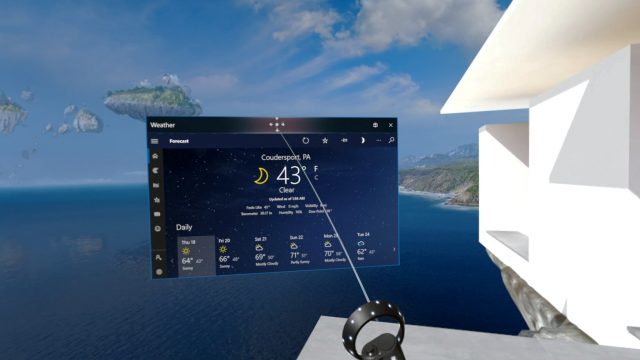
With displays with such high resolution you might think that the G2 Reverb is perfect for “virtual desktop”. But do not forget that when you look at the display 2160 × 2160 pixels, this resolution across the field of view.
In fact, if you put a virtual monitor in front of him at a suitable distance, it will have roughly equivalent resolution of about 1280 × 720. Even in this case, the virtual monitor of this size is pretty easy to read, if a little downgrade compared to 1080p monitors or higher that most uses by 2020.
Of course, you can make a virtual monitor much more than in real life to compensate for this, but it means that the monitor occupies most of your field of vision, which ultimately means that you need much more to move your head (to what you see, hit the sweet spot of the lens) than if you looked at the real monitor, which ultimately seems to be a significant compromise.
Source
CONTACTS
Address
1A Sportyvna sq, Kyiv, Ukraine 01023
804 NE 125th St, Miami, FL 33161
info@servreality.com
Skype
info@servreality.com

